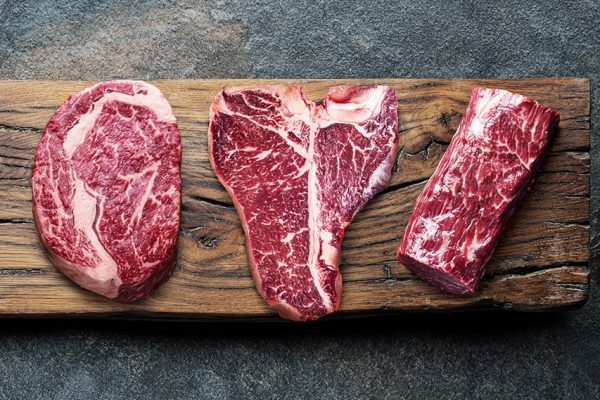The 6 Different Grades of Butchershop Beef
The beautiful thing about beef is how many varieties of it there are. Whether you prefer a marbled, tender cut of steak or a lean cut of sirloin, it’s shocking how many options are available. But for those not well-versed in beef processing, the sheer number of options available can make choosing the right cut of beef seem like taking a shot in the dark.
Here at Pease Packing, we believe that everyone should be able to find the type of beef that works best for them. That’s why we’re taking this blog post to explore the 6 different grades of beef and how you can prepare them.
1. Prime Beef
As you’re probably already familiar, prime beef is the USDA’s highest ranking for beef grades. And if you’ve ever had prime beef, it’s not hard to see why. Prime beef is renowned for its fine marbling, tender texture, and complex flavor.
Don’t let the high quality intimidate you, though—even if you’re not the best cook in town, it’s difficult to mess up the delicious and balanced flavor of prime beef.
- Best Ways to Cook: Simmered, broiled, barbequed.
- Fat Marbling: 8-13%.
- Where You’ll Find It: Your local butcher, fine dining restaurants, high end grocers.
2. Choice Beef
Choice beef is one of the most well-known grades of beef in the US—and for good reason. Not only is choice beef high quality, but it’s also surprisingly common, with around half of all cattle being rated as choice.
On top of that, choice beef has a more moderate marbling, making it slightly less tasty than prime, but also healthier.
- Best Ways to Cook: Simmered, roasted, barbequed.
- Fat Marbling: 4-10%.
- Where You’ll Find It: Your local butchershop, restaurants, grocery stores.
3. Select Beef
Despite its low marbling and fat content, select beef is still considered high quality by the USDA. Select beef has only 2-4% fat marbling, leading to its definition as a lean beef. Even so, select beef is not only tasty, but also much healthier than traditional cuts of beef due to its low fat content.
- Best Ways to Cook: Pot roasting, stews, and braises.
- Fat Marbling: 2-4%.
- Where You’ll Find It: Supermarkets, commercial retailers.
4. Standard Beef
Standard-grade beef is the highest quality of beef that you’ll almost never find in a restaurant. While standard beef isn’t considered high-quality, it is the most affordable of any store-bought beef cuts you’ll find at the supermarket.
- Best Ways to Cook: Stews, pot roasts, mixed in with other foods.
- Fat Marbling: 0-2%.
- Where You’ll Find It: Grocery stores, usually at a discount.
5. Commercial Beef
Commercial beef is infrequently sold as-is, and instead made into quality meat blends, such as ground beef, meatballs, and hamburgers. Because of the lean fat content in commercial beef, it’s also generally considered healthier than other grades while being surprisingly tasty. To cap it off, commercial beef is the most affordable beef you can purchase as a general consumer.
- Best Ways to Cook: As part of a larger dish (such as spaghetti and meatballs).
- Fat Marbling: Lean.
- Where You’ll Find It: In superstores as blended meat.
6. Utility, Cutter, and Canner Beef
A beef grade that goes by many names, utility beef is simply not great for taste. This beef is only used when flavor is far from priority #1 and is almost never sold directly to consumers. Instead, you’ll almost exclusively find it in pre-processed foods.
- Best Ways to Cook: You’re probably not cooking with this.
- Fat Marbling: Fat? Marbling?
- Where You’ll Find It: Processed meals, frozen meals, pet food.
Whether you want to have a casual cookout or evening of fine dining, you shouldn’t have to settle for a lower grade of meat. Instead, buy directly from your local butchershop to save money and get the finest cut of meat on the market. To see what we at Pease Packing have available, click here to contact us today!



